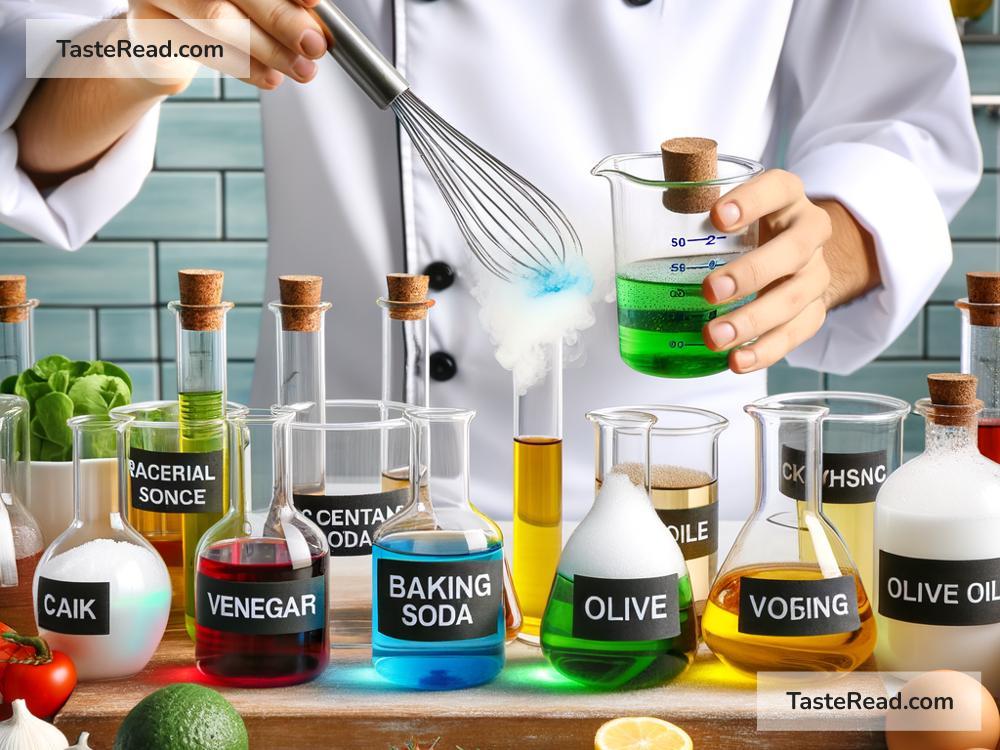The Science of Cooking with Chemical Backbone: Techniques and Tips
Cooking may seem like a creative art, but it’s equally rooted in science. Every ingredient you use, every technique you employ, and every flavor you create has a chemical explanation. Understanding the science behind cooking can elevate your dishes from ordinary to extraordinary. Don’t worry, though—this article breaks it all down in simple terms so you can take your cooking skills to the next level with ease!
What Is the Chemical Backbone of Cooking?
At its core, cooking revolves around chemical reactions. Proteins, fats, and carbohydrates are the building blocks of food and have unique properties. When exposed to heat, acid, or other forces, they change—sometimes in surprising ways! These changes are what make raw ingredients into delicious meals.
For example:
– Proteins: Found in meat, fish, eggs, and dairy, proteins change in structure when heated (a process called denaturation). This is why an egg turns from runny to solid when cooked.
– Carbohydrates: Found in foods like bread, pasta, rice, and vegetables, they undergo processes like caramelization (when sugars brown and create sweet flavors) and gelatinization (when starch absorbs water and thickens sauces).
– Fats: Present in butter, oils, and other fatty foods, fats contribute to texture and flavor. They can also act as a medium for transferring flavor and heat during cooking.
When you understand these chemical properties and reactions, you can start cooking smarter, unlocking flavors and textures that will wow your family and friends.
Key Science-Based Cooking Techniques
Let’s dive into some everyday cooking techniques and the science that makes them work.
1. Searing for Flavor
When you sear meat or fish on high heat, a magical process called the Maillard reaction occurs. This reaction happens between proteins and sugars, creating rich, browned flavors. Think of the golden crust on a steak or the crispy surface of roasted vegetables. The secret? High heat and dry surfaces. Pat your food dry before searing, and don’t crowd your pan—this keeps things sizzling.
2. Cooking Eggs: Low and Slow
Eggs are full of proteins, and they’re incredibly sensitive to heat. Ever wondered why scrambled eggs sometimes turn rubbery? Overcooking causes the proteins to tighten up too much, squeezing out moisture. The fix: cook eggs gently over low heat to keep them soft and creamy. Adding a splash of milk can dilute the proteins, making your eggs extra tender.
3. Using Acid to Balance Flavor
Acid, like vinegar, lemon juice, or even yogurt, can brighten up any dish. Acids react with fats and sugars, cutting through heaviness and sharpening flavors. They can also break down tough proteins in meat, making it tender when marinated. Pro tip: add a splash of acid at the end of cooking to amplify flavors without overpowering your dish.
4. Brining for Juicy Meat
A brine is a saltwater solution that can transform meat from dry to tender and juicy. How? Salt draws water into the proteins, keeping moisture locked in during cooking. To make a basic brine, dissolve salt in water (add sugar for extra caramelization) and soak your chicken or turkey for a few hours before cooking. The results? Juicy meat bursting with flavor.
5. Baking: Precision Is Key
Baking is a science where accuracy matters more than artistic flair. Ingredients like flour, sugar, and baking powder interact chemically to create rise, structure, and texture. For example, when baking soda or powder reacts with moisture and heat, it releases carbon dioxide—creating air pockets that make cakes fluffy. Follow measurements carefully, and don’t skip steps like sifting or whisking, which ensure the chemical reactions happen properly.
6. Resting Meat: Let Science Do the Work
When cooking meat, juices tend to move toward the center. If you slice it straight out of the pan, the juices spill out, leaving you with dry meat. By letting it rest, the juices redistribute, allowing them to soak evenly into the meat. Simply wait 5–10 minutes after cooking before cutting in—you’ll thank yourself later.
Tips for Applying Science to Your Cooking
Now that you know some scientific techniques, here are a few tips for applying them effectively:
-
Learn to Use Heat Wisely: High heat is great for browning, while low heat is better for slow cooking. Each has its purpose, so choose based on your dish.
-
Experiment with Temperatures: Use a kitchen thermometer to measure the internal temperature of meats or baked goods. This helps you cook food to safe, perfect doneness without guesswork.
-
Taste as You Go: Scientific reactions happen throughout cooking. Add salt, acid, or spices at different stages to adjust flavors dynamically.
-
Don’t Skip the Prep Work: Chopping, soaking, marinating, or even resting ingredients allows chemical reactions to start even before cooking begins.
-
Master the Basics Before Getting Fancy: You’ll understand science better by perfecting simple techniques first. Start with things like boiling, roasting, and frying, then move on to more complex methods like pressure cooking or sous vide.
Why Science Makes You a Better Cook
Cooking with science doesn’t mean you’ll lose creativity—it means you’ll have a strong foundation to experiment and innovate. When you grasp how heat, acid, salt, and time interact with ingredients, you become more confident in the kitchen. That tiny splash of vinegar, that 5-minute rest, or that gentle sear—all backed by science—can take your dishes from good to unforgettable.
So, the next time you’re cooking, pause for a moment and appreciate the chemical magic happening in your skillet or oven. With a little knowledge and practice, you’ll turn everyday meals into scientific masterpieces. Happy cooking!


